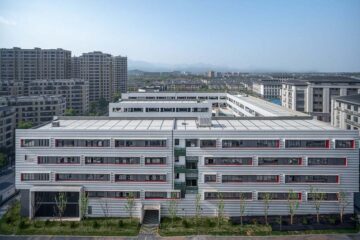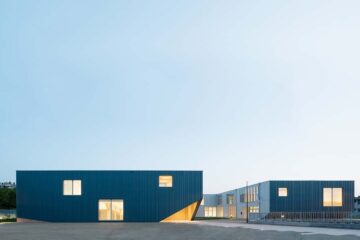Redefining Accessibility: Jiuzhai Valley Visitor Center

default
The Jiuzhai Valley National Park Visitor Center stands as an emblem of architectural ingenuity at the entrance of the Jiuzhai Valley. With a vast expanse covering approximately 30,000 m² and a site area of 89,960 m², this monumental project encompasses the construction of a visitor center, an international communication center, and the refurbishment of the Heye Hotel. Additionally, it includes extensive garden landscaping, embankment reinforcement along the Baishui River and the Feicui River, and the construction of overpasses and ramps. Spearheaded by the Jiuzhai Valley National Park Administration Bureau and helmed by esteemed institutions such as the Architectural Design and Research Institute of Tsinghua University Co., Ltd., the project is under the leadership of Mr. Zhuang Weimin, a distinguished member of the Chinese Academy of Engineering.

Context and Significance
Nestled within the breathtaking landscapes of Jiuzhai Valley, a UNESCO World Heritage Site and National Park of China, the visitor center harmonizes with its surroundings while paying homage to Tibetan culture. Designed to accommodate up to 41,000 tourists daily, the center emerges as a vital nexus for transportation and support services. Its strategic location at the park entrance ensures seamless access for visitors while embodying the ethos of environmental stewardship and cultural preservation.
Design Philosophy
Rooted in a profound reverence for nature and local heritage, the design ethos of the visitor center encapsulates two overarching principles: learning from nature and drawing inspiration from culture. By emulating the heavenly landscapes of Jiuzhai Valley and reflecting the distinctive characteristics of Sichuan and Tibetan culture, the architecture transcends mere functionality to become a testament to environmental harmony and cultural vibrancy.
Architectural Features
The visitor center’s architectural narrative unfolds with meticulous attention to detail, seamlessly blending form and function. The awe-inspiring awnings at the entrance pay homage to the iconic eye-shaped logo of the park, evoking a sense of unity between nature and humanity. These awe-inspiring structures, characterized by their dendriform columns and guiding lines, serve as beacons of cultural identity and architectural innovation.

Structural Ingenuity
At the heart of the design lies a commitment to structural integrity and sustainability. The monumental awning, spanning 38 meters, stands as a testament to engineering prowess, while the integration of locally sourced materials such as roofing slate underscores the project’s eco-conscious ethos. Moreover, the visitor center’s expansive departure square, paved with intricately designed stone patterns resembling the starry sky, offers visitors a captivating sensory experience.
Landscape Integration
Beyond its architectural grandeur, the visitor center seamlessly integrates with the surrounding landscape, fostering a sense of tranquility and serenity. The meticulously curated garden, designed by Professor Zhu Yufan and his team, pays homage to Tibetan aesthetics, with water motifs and lush greenery creating an oasis of calm along the Feicui River.
In essence, the Jiuzhai Valley Visitor Center transcends its role as a mere architectural marvel, emerging as a symbol of cultural heritage, environmental stewardship, and sustainable innovation. As it welcomes visitors from around the globe, it stands as a testament to the enduring bond between humanity and nature.





























